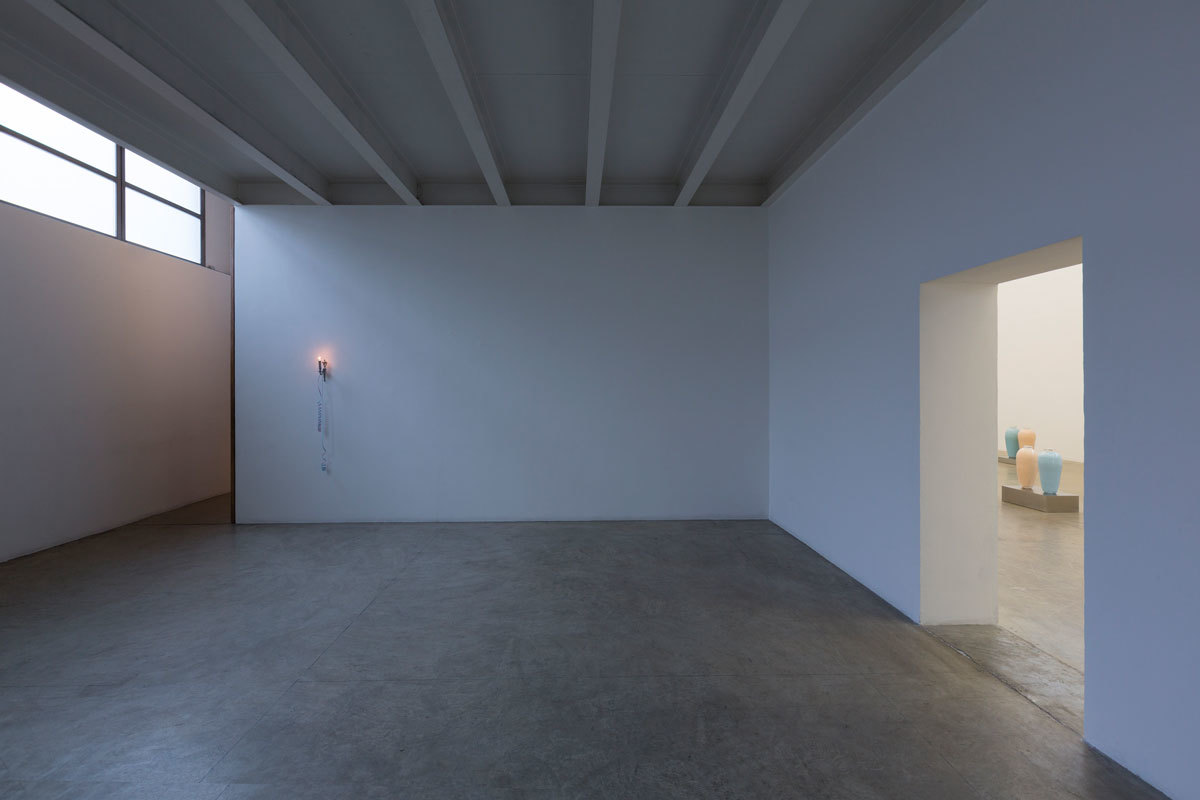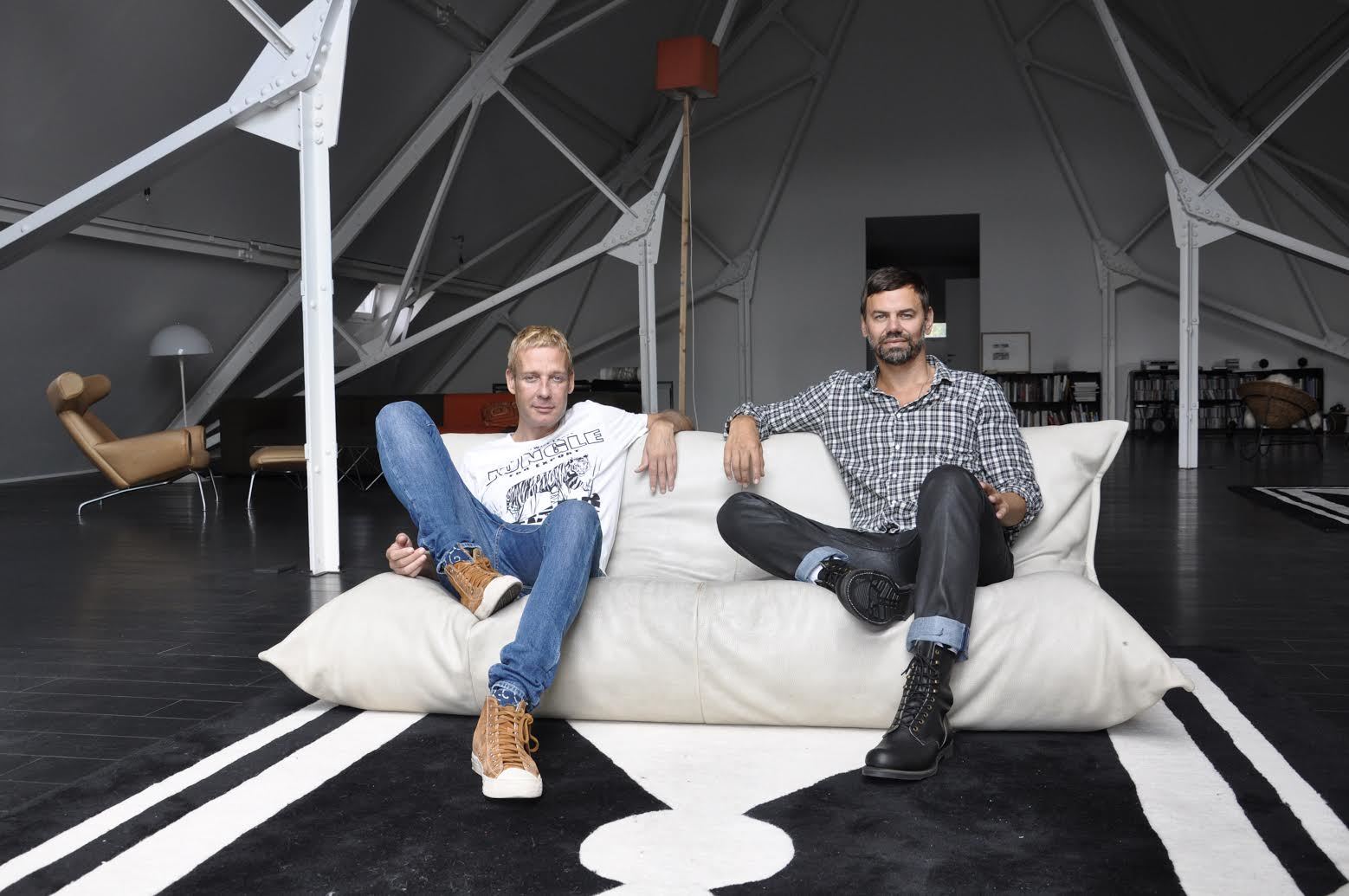When the AIDS epidemic was at its peak in gay community in the West in the 80s and 90s, artists such as Roni Horn, Félix González-Torres and the group General Idea turned into activists, using their work to open up discussion of sex, disease and death. But as combination therapy has reduced the number of people with HIV developing AIDS, and fewer people are dying, not only has the community become complacent about safe sex, but artists have failed to engage with the rising number of HIV infections. Elmgreen & Dragset are putting the topic back on the table with their new show, Stigma, whose hand-blown glass urns are filled with the actual pigments used to coat pills in the latest generation of HIV medicines, such as Truvada, Atripla, Stribild and Isentress. The pastel colour pigments are pretty, beautiful, gentle and hide “the toxic reality of these medications.” I-D caught up with them to talk about art as activism and also touched upon their 10th anniversary of their most famous art piece, Prada Marfa.
Stigma, your new exhibition deals with the topic of HIV, which affects the lives of millions of people whose survival depends on combination therapy. How was this project started?
ME: In the 90s, artists like Félix González-Torres or the collective General Idea did a lot to spread the discussion of AIDS, but their message didn’t run parallel to the evolution of the disease that became chronic over time. Apparently it seems that the whole crisis is over now and that the debate about this topic has been fading in the world of culture. Since people stopped dying of AIDS [in the West], the discussion isn’t on everybody’s lips anymore and the problems of 30 million people that live with the HIV virus are less media-friendly.

How about the title of the exhibition? Why Stigma?
ID: The exhibition’s aim is to face the prejudice that affects people with HIV in general, but also in the gay community itself. In Germany for example, it is not unusual that doctors suggest not to disclose one’s health condition at work and not to discuss it with their family if their views are conservative. This is because of the ignorance that is precisely the stigma that surrounds this topic, but most of all it’s due because of the lack of visibility and debate in the media.
Do you think that Generation Z has a real awareness on topics such as HIV or safe sex?
ME: The number of new infections among young gay people is alarming, especially in cities like London and Berlin. Really young boys have a distorted vision of reality: they think that there are no risks to contract HIV any longer; just one pill and everything will be OK. They don’t consider the complex collateral effects on the body that will result from taking such damaging meds for the rest of their life.
ID: It ought to be necessary to talk more about safe sex too. Unprotected sex is labeled as dangerous and not natural, but on a closer view it’s only been seen as anomalous from the start of the 80s. Today, in a few countries such as the USA, a prophylaxis therapy is highly recommended: it’s known as PEP, and its usage concerns moral aspects too. Just ignoring a debate on safe sex won’t help to find a solution for the HIV problem in any way.
Is art a form of social activism?
ME: From a certain point of view, it could be because art also deals with social themes. Art is created by human beings, and every man and woman should care about problems that affect their community as a whole.
So, do you feel like activists?
ID: Not directly. If I were to become an activist, I’ll surely find more efficient and concrete forms to make a real difference.
Does contemporary art have side effects?
ID: I want to believe it has but not negative ones like the medicines we are talking about in our exhibition. Art can stimulate the awareness and initiate changes and improvement in society.

Why did you choose to use the Prada house for Prada Marfa, your land-art project based in Texas?
ID: We developed a love-hate relationship with many things over time and one of these is Prada. I think that our decision to choose Prada for our project in Marfa was initially born out of our certainty that they wouldn’t sue [laughing]. Prada obviously means a great sense of style but to us it was crucial to know that Miuccia was really interested in art, and not only in advertising an object or a product.
ME: This project wasn’t born as a collaboration. We got in touch with the company and they kindly allowed us to use their logo, shoes and bags from their 2005 collection. Part of our work comes from a reflection on the art world, its internal debate and little obsessions. During that time Prada had great visibility: it was quite common to spot people wearing Prada shoes around art exhibitions and biennales. Our choice was determined by the care that Prada took of the smallest details; they had that particular taste for a minimalism close to Donald Judd’s aesthetic – it was really interesting and we thought it could fit perfectly with our vision of art.
How did you feel when the installation was vandalised and the shoes and bags stolen?
ME: If an artist is too nervous about the reaction of the public, he shouldn’t create works or public art because the world out there is wild. When you decide to expose yourself outside museums and galleries, things like that can happen. It’s not hard to imagine that a small building in the middle of nowhere becomes the perfect target to vent the adolescent frustration of attention seeking artists.
What did you learned from that experience?
ME: We learned a lot from the local community and their reaction. The whole community helped us to restore the installation; their support made us understand that it was right to keep this project alive for as long as possible. This year is the 10th anniversary ofPrada Marfa.
Stigma, Massimo De Carlo, 55 South Audley Street, London W1K 2QH. 12th October – 21st November.
Credits
Text Fabrizio Meris
Portrait Elmar Vestner
